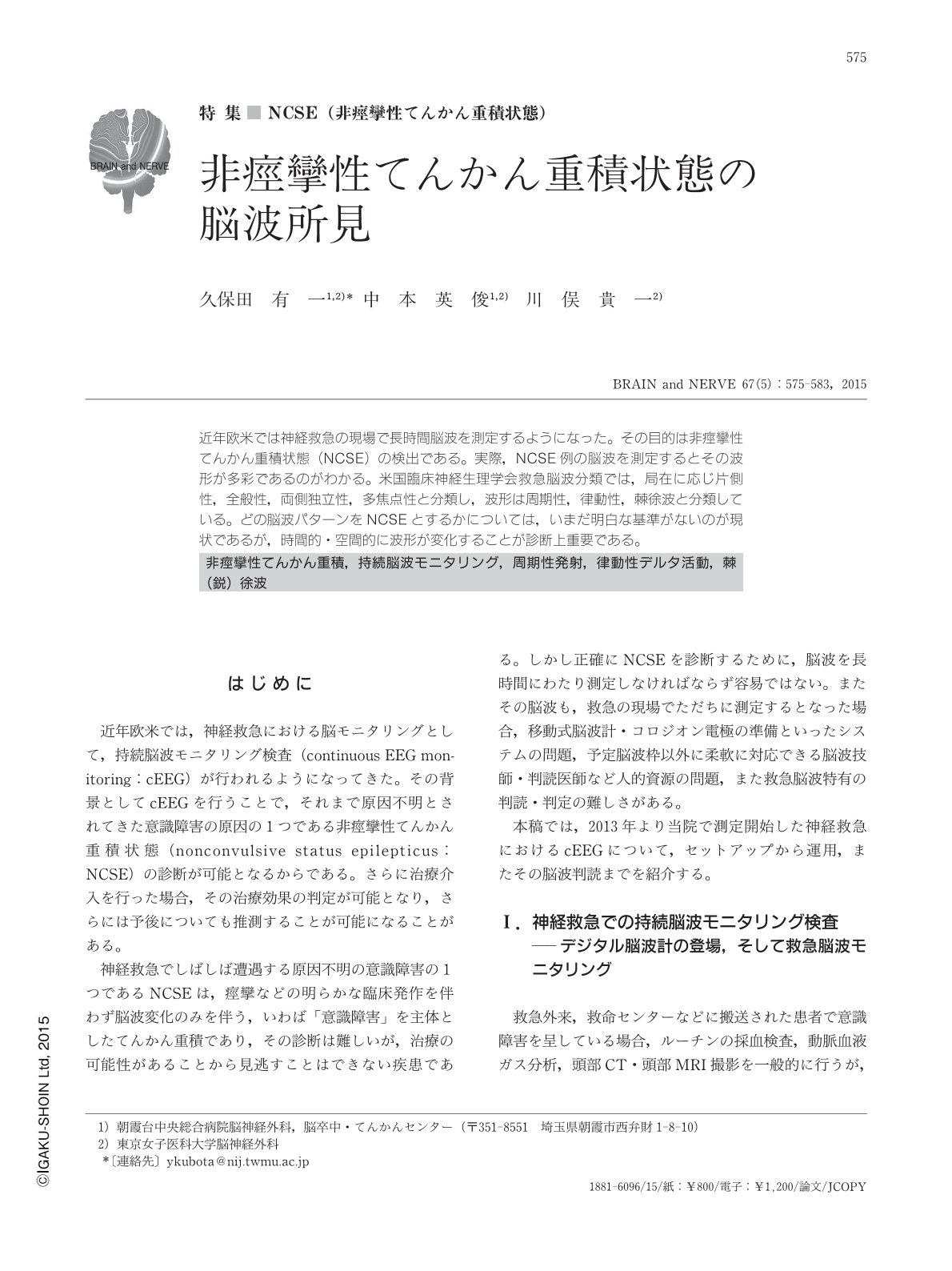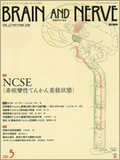Japanese
English
- 有料閲覧
- Abstract 文献概要
- 1ページ目 Look Inside
- 参考文献 Reference
近年欧米では神経救急の現場で長時間脳波を測定するようになった。その目的は非痙攣性てんかん重積状態(NCSE)の検出である。実際,NCSE例の脳波を測定するとその波形が多彩であるのがわかる。米国臨床神経生理学会救急脳波分類では,局在に応じ片側性,全般性,両側独立性,多焦点性と分類し,波形は周期性,律動性,棘徐波と分類している。どの脳波パターンをNCSEとするかについては,いまだ明白な基準がないのが現状であるが,時間的・空間的に波形が変化することが診断上重要である。
Abstract
Continuous EEG monitoring (cEEG) has been recently applied in a neurocritical care setting in the US. The purpose of cEEG is primarily to detect nonconvulsive status epilepticus (NCSE) and secondarily, to evaluate the treatment of NCSE. It is difficult to diagnose NCSE in cEEG because of its variability. In the American Clinical Neurophysiology Society's Standardized Critical Care EEG Terminology 2012, EEG localization is placed under major term 1 and is classified as Lateralized (L), Generalized (G), Bilateral Independent (BI), and Multifocal (Mf). Morphology is placed under major term 2 and is classified as periodic, rhythmic, and spike-and-wave. Although there are no unequivocal criteria for the diagnosis of NCSE, the appearance of spatial and temporal changes in the EEG is essential for diagnosis.

Copyright © 2015, Igaku-Shoin Ltd. All rights reserved.


